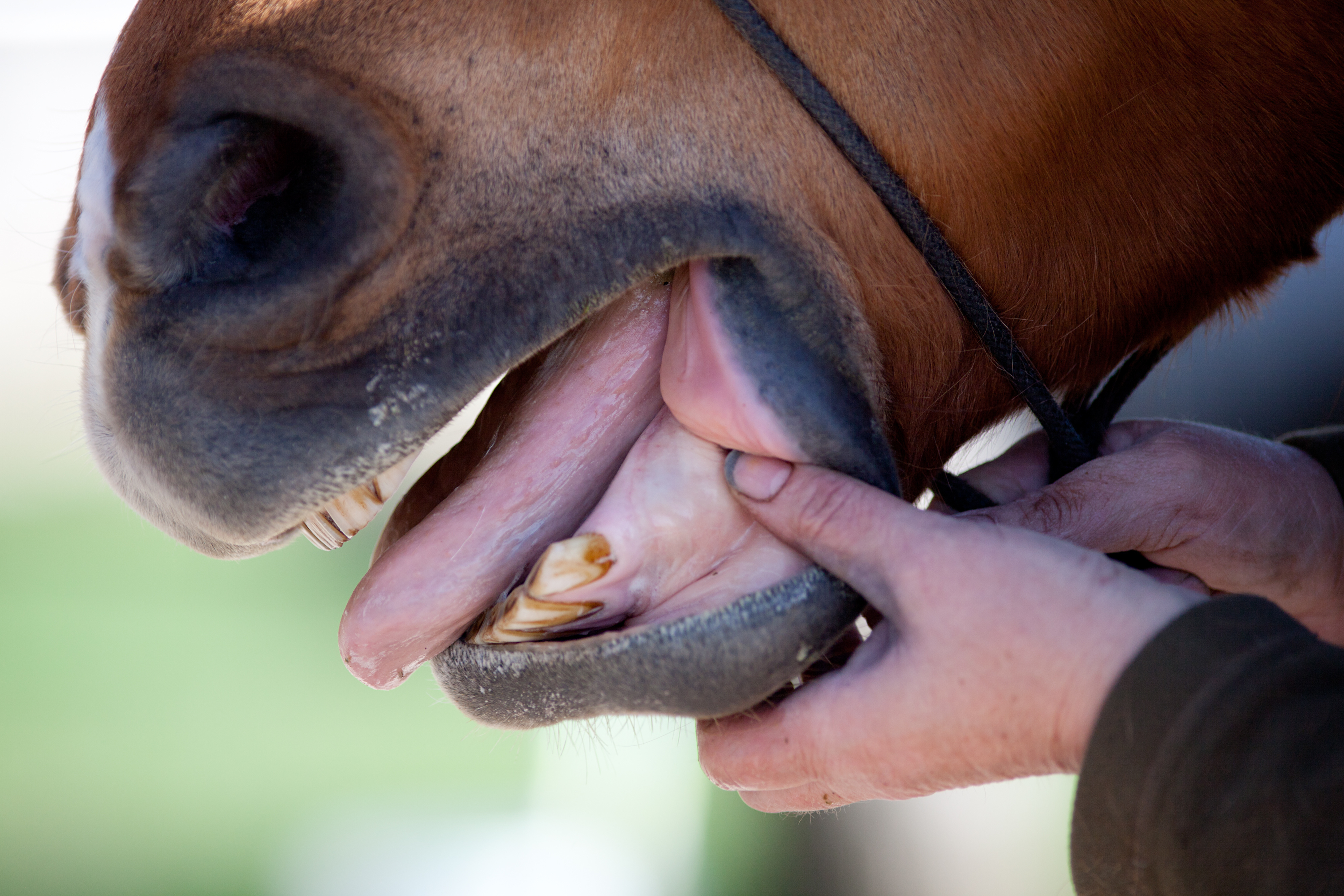One of the first questions your veterinarian might ask you if you call when your horse is ill or injured is “what color are their gums?”. A healthy horse will have gums that are a salmon color pink, and any variation from this can indicate a serious health issue that requires immediate attention.

Here are some problematic gum colors to be on the lookout for:
1. Yellow to Yellowish Brown
Gums with a yellow to brown hue are usually caused by a high concentration of a pigment called bilirubin which is released when red blood cells break down. Similar to jaundice in humans, a yellowed gum indicates liver problems when the organ is unable to filter the pigment from the bloodstream.
Tip: Gums can show a harmless tint of yellow after a horse eats high levels of beta carotene, which is found in alfalfa and carrots.
[More on Signs of Distress: Know Your Baselines]
2. Very Pale Pink
When gums are so pale pink they almost look white, this may be the result of decreased circulation, anemia, fever, and/or systemic shock.
If you notice your horse has very pale pink gums, call your vet immediately so they can diagnose the cause.
[More on Horse Health Indicators: Check Your Horse’s Vital Signs]
3. Gray to Bluish White
If you notice a gray or blue tint to your horse’s gums it might be a result of low oxygen levels in the blood and/or systemic shock.
Tip: A blue or gray outline around each tooth is a sign your horse’s gum color isn’t normal, so if you notice this, call your vet right away.
4. Dark Brick or Blood-Red
If you notice your horse’s gums appear a dark blood-red color, it could be a sign of severe dehydration or endotoxemia related to poisoning from toxic plants.
[More on Dehydration: Electrolytes for Horses]
Tip: Another way to check if your horse is dehydrated is through their skin. If they are dehydrated, their skin will become more elastic than normal. If you pinch a hydrated horse’s skin, it will bounce back to its normal position immediately. But, if you pinch their skin and it takes a few seconds to fully flatten out and return to normal, they are most likely dehydrated.






